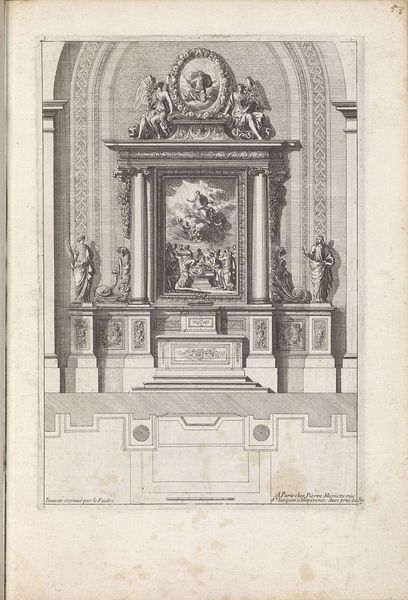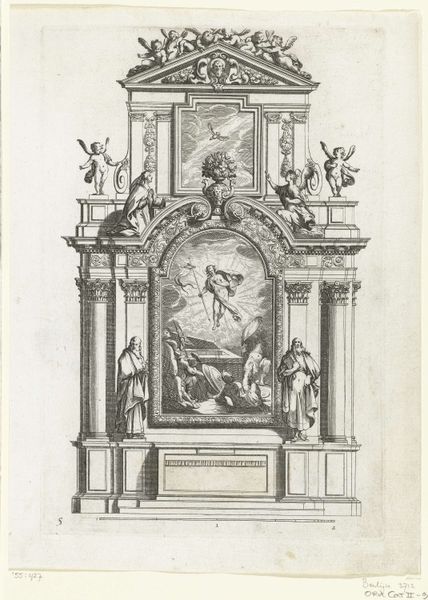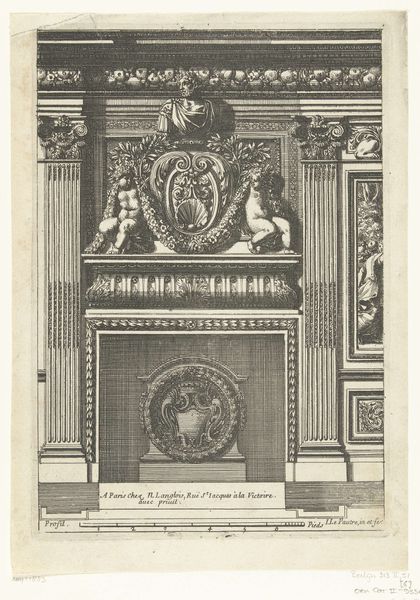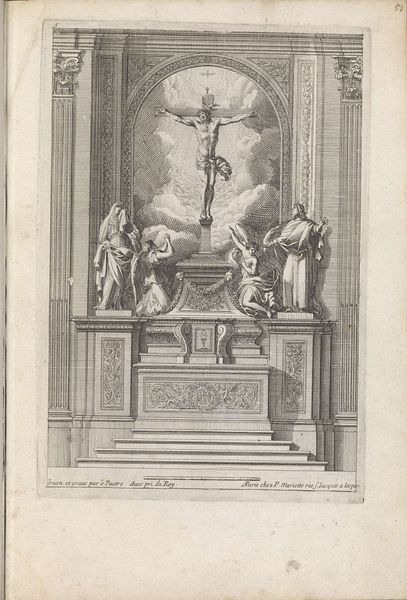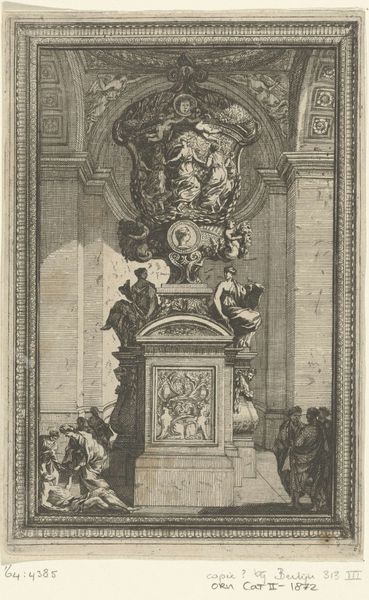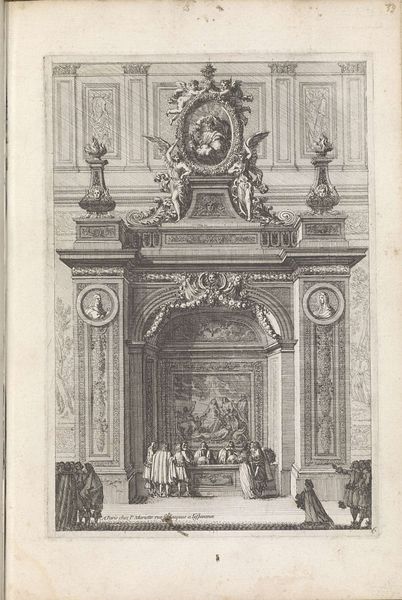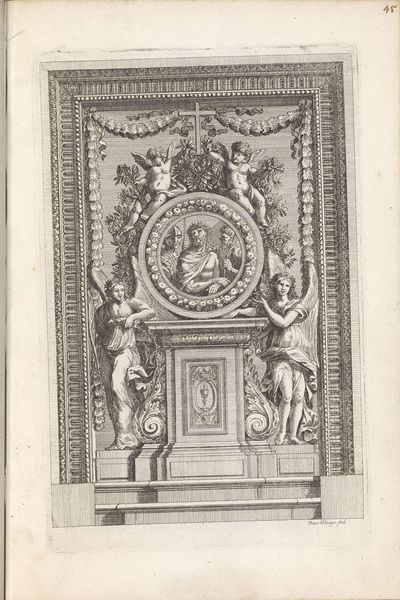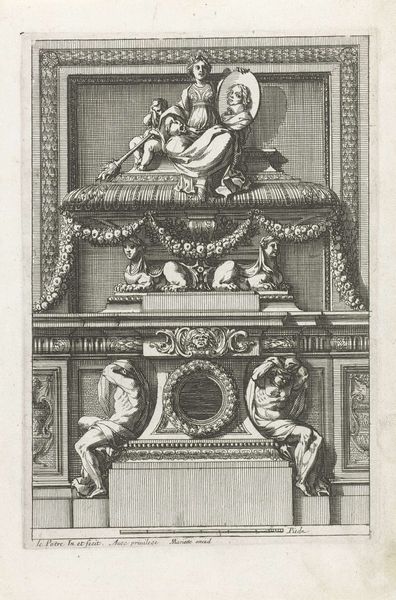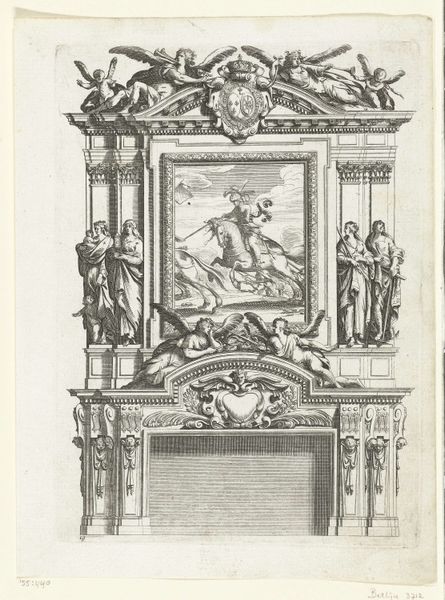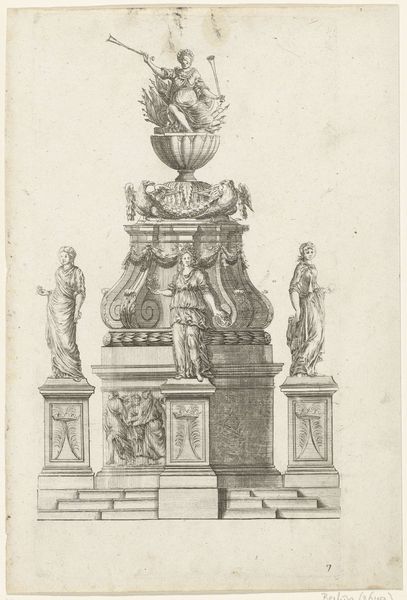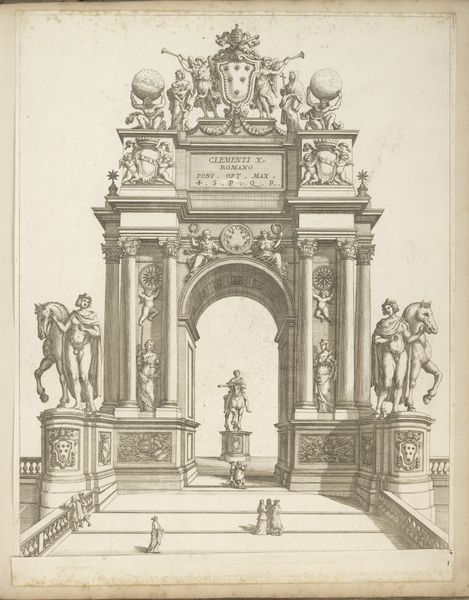
print, engraving
#
baroque
# print
#
old engraving style
#
history-painting
#
italian-renaissance
#
engraving
#
christ
Dimensions: height 216 mm, width 149 mm
Copyright: Rijks Museum: Open Domain
Curator: Here we have an engraving dating back to the latter half of the 17th century, sometime between 1658 and 1670, by Jean Le Pautre. It is called "Altar with a Painting of the Resurrection". Editor: It's fascinating. The incredibly detailed lines create this elaborate scene – so formal and yet almost theatrical. There's a certain drama and triumph inherent, no? Curator: Precisely. Lepautre was a master of ornamental design, deeply embedded in the Baroque aesthetic. The engraving reflects the era's artistic interest in perspective. The altarpiece becomes this focal point of the whole composition, dominating everything around it. Think about where and for whom such work may have been intended. Editor: The layers in this print remind me how constructed notions of power can be within religious narratives, even down to depictions of resurrection. I am stuck on that triumphant, idealized Christ figure hovering above. Curator: His idealized form relates to the Renaissance and Baroque traditions, blending classical aesthetics with Christian symbolism. He looks almost performative in his actions; art was designed to create certain responses within a specific audience. Editor: Absolutely. And that performative aspect highlights art's role in propagating specific religious and social values. These highly crafted images are never neutral; they carry significant ideological weight. The visual language – the muscular Christ, the reverent observers—is potent. Curator: What strikes me is how this seemingly timeless image still engages viewers. The themes, adapted from an older tradition of iconography, become signifiers for renewed social ideas. Editor: Right. And analyzing this today, we must always remember the systems of patronage and control that shaped it. Examining Lepautre's "Altar with a Painting of the Resurrection," it compels us to reconsider how art acts as both a mirror and a maker of societal narratives, from the past until now.
Comments
No comments
Be the first to comment and join the conversation on the ultimate creative platform.
